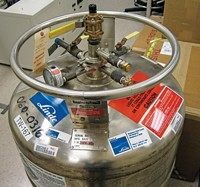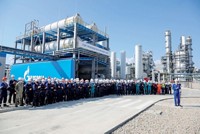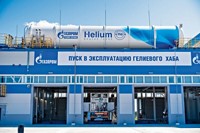Advertisement
Grab your lab coat. Let's get started
Welcome!
Welcome!
Create an account below to get 6 C&EN articles per month, receive newsletters and more - all free.
It seems this is your first time logging in online. Please enter the following information to continue.
As an ACS member you automatically get access to this site. All we need is few more details to create your reading experience.
Not you? Sign in with a different account.
Not you? Sign in with a different account.
ERROR 1
ERROR 1
ERROR 2
ERROR 2
ERROR 2
ERROR 2
ERROR 2
Password and Confirm password must match.
If you have an ACS member number, please enter it here so we can link this account to your membership. (optional)
ERROR 2
ACS values your privacy. By submitting your information, you are gaining access to C&EN and subscribing to our weekly newsletter. We use the information you provide to make your reading experience better, and we will never sell your data to third party members.
Business
New method used to discover potential helium source
Technique could alleviate recurrent shortages of the noble element, used in scientific instruments
by Marc S. Reisch
June 30, 2016
| A version of this story appeared in
Volume 94, Issue 27

Using a new technique, scientists have discovered reserves of helium in Tanzania said to be equivalent to seven times the amount of the noble gas consumed worldwide each year. The new source could alleviate recurrent shortages of helium that have plagued users of scientific instruments and medical imaging equipment.
Working with the start-up firm Helium One, scientists at Durham University and the University of Oxford uncovered the reserves in Tanzania’s East African Rift Valley. The researchers theorize that intense heat from volcanic activity in the Rift Valley releases helium in ancient crustal rock. The gas then accumulates in underground reservoirs.
The scientists say they have combined methods used in oil exploration with seismic images of gas-trapping structures and calculations from independent experts to estimate helium reserves of 1.5 billion m3 in just one part of the Rift Valley.
The researchers presented the findings on June 28 in Yokohama, Japan, at the Goldschmidt Conference, an annual gathering of geochemistry experts.
Today, helium is recovered as a by-product of natural gas extraction. But with prices of helium now about four times as high as they were a decade ago, prospectors are looking for new sources. The Tanzania helium reserve would be the first to be discovered and developed intentionally.
“We would be able to effectively ratchet production up or down depending on what the world required,” Helium One CEO Thomas Abraham-James tells C&EN. The year-old start-up is now trying to raise $40 million from industrial gas companies and other investors to complete exploration at sites licensed from the Tanzania government. Abraham-James estimates the cost of building a helium purification plant at about $100 million.
If the Tanzania reserve turns out to be as large as it now appears, “it could be an important discovery,” says Phil Kornbluth, a consultant to Helium One who previously ran the helium operations of Matheson. But, he cautions, “it’s still early days” for the start-up firm.





Join the conversation
Contact the reporter
Submit a Letter to the Editor for publication
Engage with us on Twitter